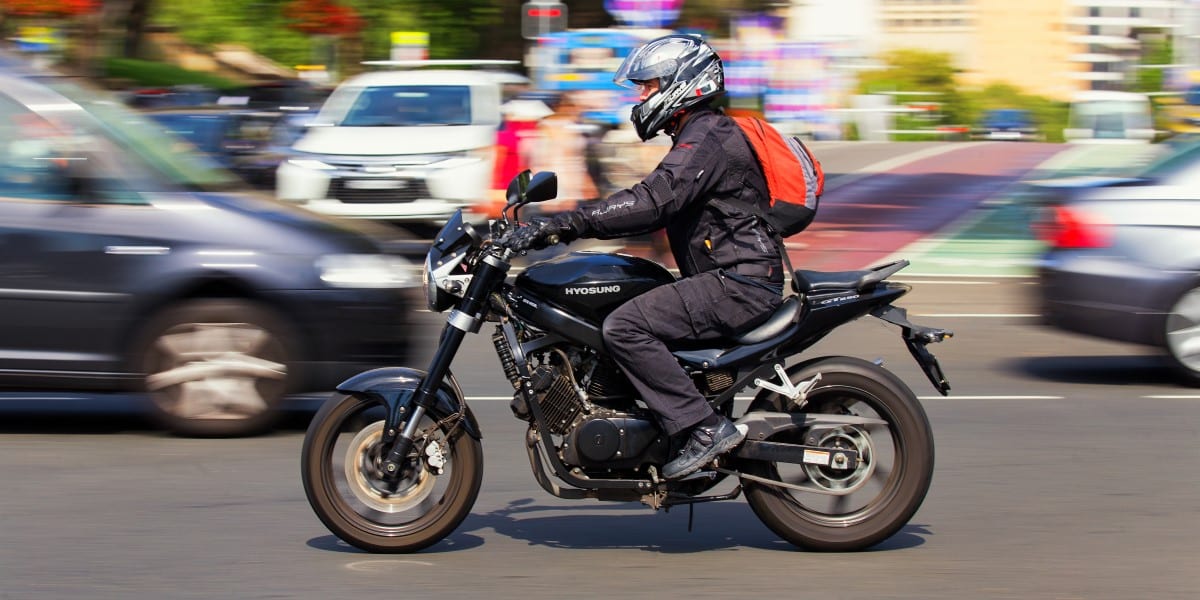Understanding Lane Splitting: Balancing Safety and Controversy
Exploring Lane Splitting and Its Safety Implications
Lane splitting, characterized by a motorcyclist navigating between lanes of stalled or slow-moving traffic, has garnered both fervent support and serious concern. Many wonder, “Is lane splitting legal in Florida?” Advocates highlight its potential to ease traffic congestion and reduce rear-end collisions. Yet, the safety of both motorcyclists and other drivers remains a central point of contention, fostering a spectrum of viewpoints on this maneuver in the context of Florida’s laws.
The Florida Perspective: Deciphering Lane Splitting Laws
In the realm of state regulations, Florida emerges as one that unequivocally prohibits lane splitting. While a solitary state embraces this practice, Florida’s stance is rooted in the belief that the potential risks overshadow any potential advantages. Unraveling the factors that contribute to Florida’s unwavering resistance to lane splitting becomes paramount in understanding its legal landscape.
Analyzing the Risk-Benefit Equation and Legislative Landscape
Examining the Safety Debate: Should Lane Splitting Be Legalized?
As various states grapple with the idea of legalizing lane splitting, a fundamental question arises: Can this practice strike a harmonious balance between enhancing road safety and inadvertently promoting reckless behavior? Delving into safety data and drawing insights from countries where lane splitting is sanctioned underscores the nuanced nature of this debate.
Safely Navigating Lane Splitting and Motorcycle Etiquette
Guidelines for Executing Safe Lane Splitting
For motorcyclists contemplating lane splitting, embracing prudent practices stands as a crucial line of defense against potential risks. Remaining acutely aware of blind spots, optimizing visibility through the strategic use of headlights and reflective gear, and grasping the psychology of drivers during lane changes all contribute to the responsible execution of lane splitting.
Distinguishing Lane Splitting from Lane Sharing
It’s essential to differentiate between lane splitting and lane sharing, two concepts often conflated. Lane splitting entails a motorcyclist moving between lanes, while lane sharing involves two motorcyclists riding abreast within a single lane. Importantly, exceeding two riders sharing a lane contravenes the motorcycle regulations set forth by the state of Florida.
Legal Implications of Lane Splitting Accidents
Navigating Legal Consequences and Liability
When accidents transpire during lane splitting, the legal landscape becomes complex and intricate. A motorcycle accident lawyer can be invaluable in grasping the intricacies of liability and its connection with negligence. This becomes a foundational aspect in discerning culpability. In accordance with Florida accident law, the ability to establish partial fault on the part of the other driver, with the guidance of a Motorcycle Accident Lawyer, emerges as a crucial determinant in the quest for fair compensation.
The Role of Experience and Evidentiary Proof in Legal Proceedings
The significance of a motorcyclist’s experience and specialized training takes center stage in lane splitting accidents. However, translating this expertise into concrete evidence becomes essential in substantiating claims of negligence and demonstrating liability.
Constructing a Solid Legal Case: The Importance of Evidentiary Foundations
Compelling Evidence: The Cornerstone of Legal Pursuits
For individuals ensnared in lane splitting accidents, constructing a compelling legal case hinges on meticulous evidence collection. Garnering testimony from witnesses, capturing the accident scene through comprehensive photographs, analyzing skid marks, and diligently recording weather conditions all contribute to building a robust evidentiary basis.
Seeking Legal Recourse after a Motorcycle Accident
Pursuing Damages: Beyond the Realm of Lane Splitting
Following a motorcycle accident, irrespective of whether lane splitting played a role, the pursuit of damages assumes paramount importance in the journey towards recovery. Our dedicated legal team stands poised to extend unwavering support, advocating for your rights and ensuring the attainment of just compensation.
A Path to Recovery: Our Commitment to Your Well-being
Holistic Support for Motorcycle Accident Victims
Motorcycle accidents often lead to multifaceted injuries, encompassing both physical and emotional realms. Having worked extensively with riders navigating the path to recovery, our legal experts bring a wealth of empathy and understanding to guide you through the process.
Guiding You Towards Justice: Complimentary Consultation and Thorough Assessment
Tailored Legal Assistance
If you find yourself grappling with the aftermath of a motorcycle accident, regardless of its direct connection to lane splitting, our legal team extends a warm invitation for a complimentary consultation and comprehensive case assessment. Your pursuit of rightful compensation is underpinned by our steadfast dedication.




